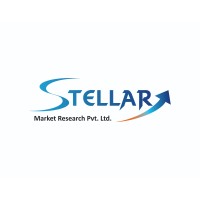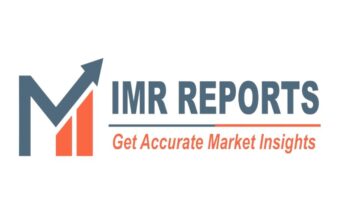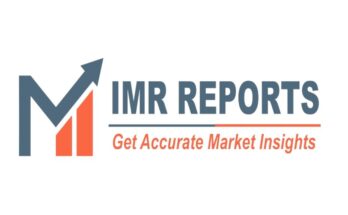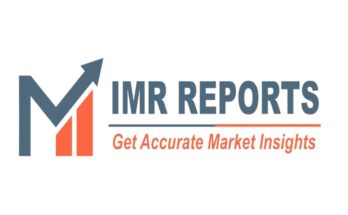Overview of the Satellite Propulsion System Market
The Satellite Propulsion System market is poised for significant growth, with a market size of USD 11.13 billion in 2023 and an expected increase to USD 24.27 billion by 2030, driven by a robust CAGR of 11.78% during the forecast period from 2024 to 2030. This growth is primarily attributed to the rising demand for advanced propulsion systems in various space missions, including government, military, and commercial applications.
In recent years, there has been a marked increase in the need for reliable and efficient propulsion solutions, especially for CubeSats and other small satellite applications. The market is shifting towards commercial-off-the-shelf (COTS) propulsion systems, which offer flight-ready solutions. While many propulsion technologies are still in the early stages of development, advancements in chemical and electric propulsion systems are on the horizon. Emerging technologies such as nuclear, electric, chemical, and solar propulsion systems are expected to play a pivotal role in transforming both Earth-centric operations and interplanetary exploration.
Market Dynamics
Drivers:
- Government and Private Sector Investments: Increased interest in space capabilities from countries like China, India, and Japan has propelled advancements in satellite technology. For example, significant funding for satellite propulsion initiatives is evident from recent investments, such as Kongtian Dongli’s financing in China to support constellation projects.
- Collaborations and Partnerships: Organizations like the European Space Agency (ESA) are fostering innovation through partnerships. Recent contracts awarded to companies like IENAI SPACE to develop advanced propulsion technologies underline the collaborative spirit of the industry.
- Rising Demand for Electric Propulsion Systems: The shift towards electric propulsion systems reflects their potential for high efficiency and lower operational costs. NASA’s funding for the development of advanced electric propulsion systems is a testament to the growing interest in these technologies, which promise greater payload capacities and reduced fuel consumption.
Challenges:
- Development of Next-Generation Propulsion Technologies: The industry faces challenges in achieving higher thrust and efficiency metrics, particularly for deep space missions. While electric propulsion is more efficient, it still has limitations in thrust capabilities that need to be addressed.
- Environmental Sustainability: As space operations expand, there is increasing pressure to minimize environmental impacts. Developing green propulsion technologies and reducing space debris is critical to ensuring the sustainability of space exploration.
- Investment Requirements: Significant capital investment is required for research, development, and testing of advanced propulsion systems. Collaboration across sectors is essential to share costs and accelerate technological advancements.
Market Segmentation
The Satellite Propulsion System market is segmented as follows:
- By Type:
- Non-Chemical Propulsion: Expected to dominate market share, with solar and electric propulsion systems leading innovations.
- Chemical Propulsion: Continues to be a reliable choice for many traditional satellite applications.
- By Class of Orbit:
- Low Earth Orbit (LEO)
- Medium Earth Orbit (MEO)
- Geostationary Orbit (GEO)
- Elliptical Orbit
- By End-User:
- Government and Military
- Civil and Earth Observation
- Commercial
Regional Insights
The Satellite Propulsion System market is geographically segmented into:
- North America: Dominated by established players like NASA, SpaceX, and Boeing, North America is a leader in satellite propulsion development, fueled by significant government and private sector investments.
- Europe: The European market is bolstered by organizations like ESA, with companies such as Airbus and Safran at the forefront of technological advancements.
- Asia-Pacific: Countries like China and India are emerging as key players, with increasing investment in satellite technologies and propulsion systems.
- Middle East and Africa: Growth in space initiatives and satellite deployments is evident, albeit at a slower pace compared to other regions.
- South America: The market is gradually developing, with increasing interest in satellite applications.
Key Players in the Satellite Propulsion System Market
Key players shaping the Satellite Propulsion System market include:
North America
- Aerojet Rocketdyne
- Boeing Defense, Space & Security
- Northrop Grumman Innovation Systems
- Lockheed Martin Space Systems
- SpaceX
Europe
- Airbus Defence and Space
- Safran S.A.
- Thales Alenia Space
Asia-Pacific
- Kongtian Dongli
- ISRO (Indian Space Research Organization)
- China Aerospace Science and Technology Corporation (CASC)
Conclusion
The Satellite Propulsion System market is at a pivotal point, driven by technological advancements and a growing interest in space exploration. The emphasis on sustainability, efficiency, and innovation positions this market for substantial growth in the coming years, providing numerous opportunities for stakeholders and investors. The collaborative efforts of government agencies, private entities, and academic institutions will be crucial in navigating the challenges and harnessing the potential of next-generation propulsion technologies.
Key Offerings:
- Past Market Size and Competitive Landscape (2024−2030)
- Past Pricing and price curve by region (2024−2030)
- Market Size, Share, Size & Forecast by Different Segment | 2024−2030
- Market Dynamics – Growth Drivers, Restraints, Opportunities, and Key Trends by Region
- Market Segmentation – A detailed analysis by segment with their sub-segments and Region
- Competitive Landscape – Profiles of selected key players by region from a strategic perspective
- Competitive landscape – Market Leaders, Market Followers, Regional player
- Competitive benchmarking of key players by region
- PESTLE Analysis
- PORTER’s analysis
- Value chain and supply chain analysis
- Legal Aspects of Business by Region
- Lucrative business opportunities with SWOT analysis
- Recommendations
About Stellar Market Research:
Stellar Market Research is a multifaceted market research and consulting company with professionals from several industries. Some of the industries we cover include medical devices, pharmaceutical manufacturers, science and engineering, electronic components, industrial equipment, technology and communication, cars and automobiles, chemical products and substances, general merchandise, beverages, personal care, and automated systems. To mention a few, we provide market-verified industry estimations, technical trend analysis, crucial market research, strategic advice, competition analysis, production and demand analysis, and client impact studies.
Contact Stellar Market Research:
S.no.8, h.no. 4-8 Pl.7/4 Kothrud
Pinnac Memories Fl. No. 3
Kothrud, Pune, Maharashtra, 411029
visit our website:
India Bike Sharing Market https://www.stellarmr.com/report/India-Bike-Sharing-Market/221
Japan Bike Sharing Market https://www.stellarmr.com/report/Japan-Bike-Sharing-Market/227
South Korea Bike Sharing Market https://www.stellarmr.com/report/South-Korea-Bike-Sharing-Market/252
Singapore Silicone Market https://www.stellarmr.com/report/Singapore-Silicone-Market/558
Malaysia Smart Manufacturing Platform Market https://www.stellarmr.com/report/Malaysia-Smart-Manufacturing-Platform-Market/561
United States Vertical Farming Market https://www.stellarmr.com/report/United-States-Vertical-Farming-Market/465




